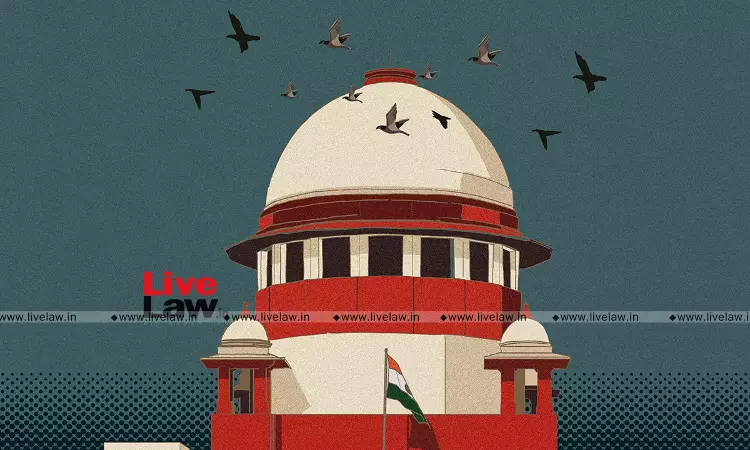- Home
- /
- Supreme court
- /
- 'Witnesses Must Identify Accused In...
'Witnesses Must Identify Accused In Court When Previously Known', Supreme Court Overturns Conviction In 2001 Murder Case
Yash Mittal
15 May 2025 11:54 AM IST
The Supreme Court observed that if a witness was familiar with the accused before the commission of the crime, it becomes essential for the witness to identify the accused in court, and failure to do so would undermine the prosecution's case. Holding thus, the bench comprising Justices Abhay S. Oka, Pankaj Mithal, and Ahsanuddin Amanullah set aside the convictions of the accused, who had...
The Supreme Court observed that if a witness was familiar with the accused before the commission of the crime, it becomes essential for the witness to identify the accused in court, and failure to do so would undermine the prosecution's case.
Holding thus, the bench comprising Justices Abhay S. Oka, Pankaj Mithal, and Ahsanuddin Amanullah set aside the convictions of the accused, who had been found guilty under Sections 302 (murder) and 149 (unlawful assembly) of the Indian Penal Code by both the Trial Court and the High Court. The acquittal was primarily based on the fact that the five injured eyewitnesses, whose testimonies formed the basis of the conviction, failed to identify the accused persons in court.
It observed, "In a case where there are eyewitnesses, one situation can be that the eyewitness knew the accused before the incident. The eyewitnesses must identify the accused sitting in the dock as the same accused whom they had seen committing the crime."
With the help of an illustration, the Court further explained:
“For example, if an eyewitness states in his deposition that “he had seen A, B and C killing X and he knew A, B and C”. Such a statement in the examination-in-chief is not sufficient to link the same to the accused. The eyewitness must identify the accused A, B and C in the Court. Unless this is done, the prosecution cannot establish that the accused are the same persons who are named by the eyewitness in his deposition. If an eyewitness states that “he had seen one accused assaulting the deceased with a sword, another accused assaulting the deceased with a stick and another accused holding the deceased to enable other accused to assault the deceased.” In such a case, the eyewitness must identify the accused in the open Court who, according to him, had assaulted the accused with a stick, who had assaulted the deceased with a sword and who was holding the deceased. Unless the eyewitnesses identify the accused present in the Court, it cannot be said that, based on the testimony of the eyewitnesses, the guilt of the accused has been proved.”
Background
The case arises from a violent altercation that resulted in the deaths of two individuals. Nine accused were convicted by both the Trial Court and the High Court under Sections 302 (murder) and 149 (unlawful assembly) of the Indian Penal Code, primarily relying on the accounts of five injured eyewitnesses.
According to the prosecution, the accused, allegedly armed with swords, axes, and iron rods, assaulted the victims over a property dispute related to a medical shop. However, the witnesses failed to identify the specific roles or degrees of involvement of each accused during their court testimonies.
Challenging the impugned findings, the convicted individuals filed an appeal before the Supreme Court.
Decision
Setting aside the impugned findings, the judgment authored by Justice Oka noted that since witnesses named accused in their depositions but did not physically identify them in court than without in-court identification, their testimony lacked evidentiary value.
“In the present case, in case of two eyewitnesses, in the cross-examination, it is brought on record that the accused persons named by them were sitting in the Court. However, they did not identify a particular accused by ascribing him a role. None of the eyewitnesses has specifically identified any of the accused in the Court.”, the court said.
Further, the Court found that the witnesses omitted key details (e.g., weapon use, roles of specific accused) in police statements, which undermines their credibility under Section 162 CrPC.
“In this case, the failure of the eyewitnesses to identify the accused in the court as the accused they had seen committing the crime is fatal to the prosecution's case. There are material omissions brought on record in the cross-examination of the eyewitnesses. They are so relevant that the same constitute contradictions in view of the explanation to Section 162 of the Code of Criminal Procedure, 1973.”, the court added.
In terms of the aforesaid, the court allowed the appeal and set aside the conviction due to the prosecution's failure to prove identity beyond a doubt.
Case Title: Tukesh Singh & Ors. versus State of Chhattisgarh
Citation : 2025 LiveLaw (SC) 566
Click here to read/download the judgment
Appearance:
For Appellant(s) in Crl.A.No.1157/ Mr. Sidharth Luthra, Sr. Adv. 2011 Mr. Mahesh Pandey, Adv. Mr. Mihir Joshi, Adv. Ms. Nishi Prabha Singh, Adv. Mr. Chandrika Prasad Mishra, Adv. Ms. Prashasti Singh, Adv. Ms. Mridula Ray Bharadwaj, AOR Ms. Swati Surbhi, Adv.
in Crl.A.No. 1713/2012 Mr. Rajesh Pandey, Sr. Adv. Mr. Mahesh Pandey, Adv. Mr. Mihir Joshi, Adv. Ms. Nishi Prabha Singh, Adv. Mr. Chandrika Prasad Mishra, Adv. Ms. Prashasti Singh, Adv. Ms. Mridula Ray Bharadwaj, AOR Ms. Swati Surbhi, Adv.
in Crl.A.No. 1608/2011 Mr. Sameer Shrivastava, AOR Ms. Yashika Varshney, Adv. Ms. Palak Mathur, Adv. Mrs. Priyanka Shrivastava, Adv.
For Respondent(s) State Mr. Praneet Pranav, D.A.G. Mr. Vinayak Sharma, Standing Counsel, Adv. Ms. Kritika Yadav, Adv. Mr. Ravinder Kumar Yadav, AOR Mr. P.Amrut,Adv.



